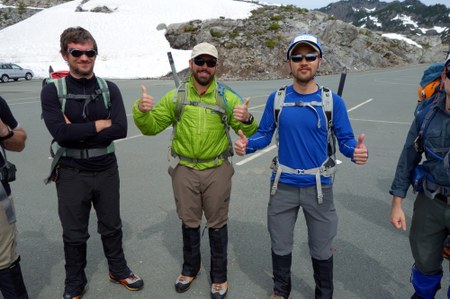
I am an active hike leader with The Mountaineers, and I occasionally hear from participants who are disappointed that a trip didn’t meet their expectations. Sometimes that stems from the way the trip was listed and sometimes it comes from a participant who isn’t familiar with the culture of the club. Either way, it usually results from a misalignment in goals and expectations between the trip leader and participant(s).
I am sure that all of our Mountaineers leaders want their trip participants to have a great experience and return to the trailhead in a safe manner, but that is often easier said than done!
Setting consistent expectations starts with the trip listing. During a recent conversation with Carla Jonientz, my co-chair of the Olympia Hiking & Backpacking group, we discussed the process of writing great activity listings. We’ve both found that putting in effort up front to write clear goals and expectations makes it easier for both the leader and participants to have a positive experience. (Leaders: check out How To: Write a Great Activity Listing before posting your next trip!)
Carla also recently attended a continuing education program where she received a nugget of wisdom she feels we should incorporate into all of our trailhead briefings:
"As we are listing the trip, communicating with participants, and particularly at the trailhead briefing, make a point of having the expectations of your trip be part of that conversation. When I lead a trip, my expectations might be as simple as ensuring all participants have an enjoyable and safe experience. By stating my expectations and goals - and then asking participants what theirs are for the day - we can come together as a group to have a more positive and cohesive experience."
I often state my expectations prior to a trip. Generally I outline that I'd like to hike at a particular pace, stay together as a group, and that no member will be left behind to hike alone. For the Conditioning Hiking Series course, my goal might be to help the participants achieve their fitness goal for the day, learn new skills, or apply ones they have previously learned in a safe manner.
Key elements for a successful trip:
- Write a great activity listing. Be clear and concise with your details. Include information such as pace, strenuousness, and expectations. Especially if you've listed a slower-paced hike, be sure to stick to the parameters you outlined while out on the trial.
- Get to know your participants before the trip. Take a few minutes to review the person’s activities and get a feel for whether you need to ask more questions. Are they experienced? Have they done similar trips with the club? If not, contact them! Maybe they have been doing similar trips outside of The Mountaineers, and their experience will help you understand group dynamics before you set out.
- Communicate before the trip. Give detailed information regarding meeting places, directions, parking pass requirements, special gear, and terrain considerations. Confirm trip details such as distance and elevation gain, and reiterate your intended pace, plans, and goals for the group. These details are critical to setting expectations for both you as the leader, and for all participants.
- Communicate during the trip. Everyone comes on Mountaineers trips to have fun, and it's a good idea to reiterate this when you meet for the first time. Facilitate group introductions, and encourage everyone to state their goals for the day. This will help everyone get to know one another and set group expectations. Check in with your participants throughout the trip to gauge how everyone is feeling. Encourage group decisions if you want to make changes to distance or pace, and if you want to take a break.
- Review your feedback after the trip. After each trip, participants are asked to anonymously provide feedback about their experience. Make a routine of reviewing these comments to celebrate what went well and to help you make tweaks for future trips.
As Mountaineers, I think we all want the same thing: to get outside and enjoy our beautiful state in a safe manner with amazing people! But it's important to remember that everyone has a slightly different idea of what that might look like. We are all human, and if we take the time to set mutual expectations for our group, we have a better chance of success.
Add a comment
Log in to add comments.Thank you, Donna! I agree with you 100%. Scramble and climb leaders will also benefit from your excellent comments and suggestions. See you out there! Nancy Lloyd
Nicely stated, Donna! Hope to use all these techniques with my hikers headed for Tolmie Peak tomorrow. Thank you!
Hi Donna...appreciate you posting these suggestions. I am about to post my first mentored hike in order to become a hike leader, and found your comments helpful. Will also check out the link on creating a great activity listing. Thanks -Brad
 Donna Kreuger
Donna Kreuger